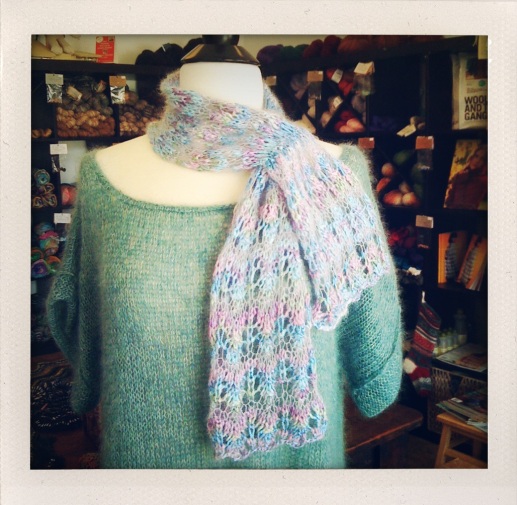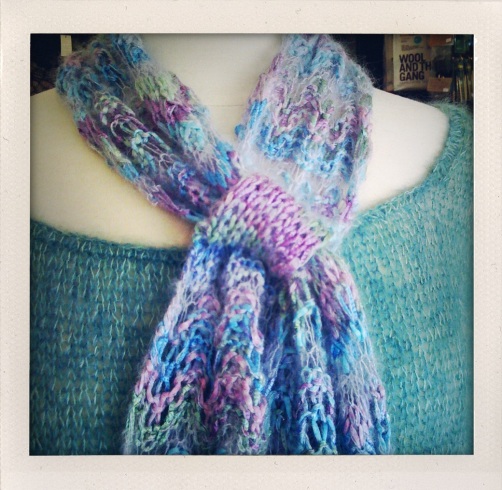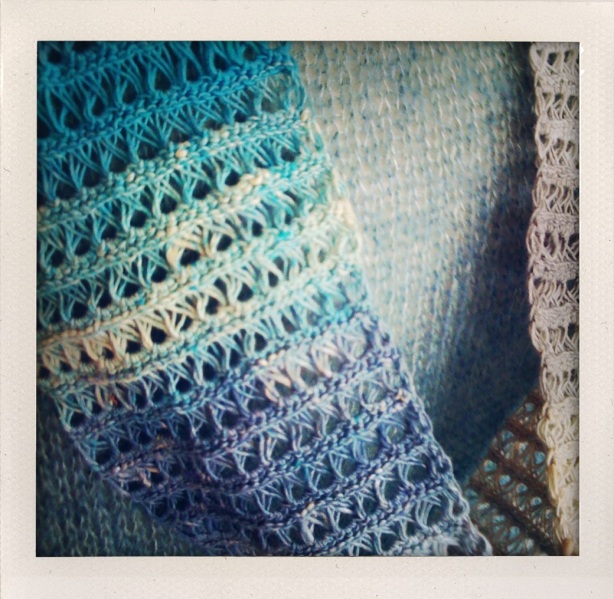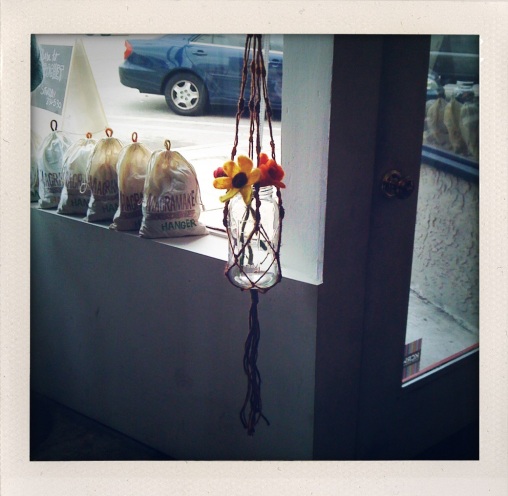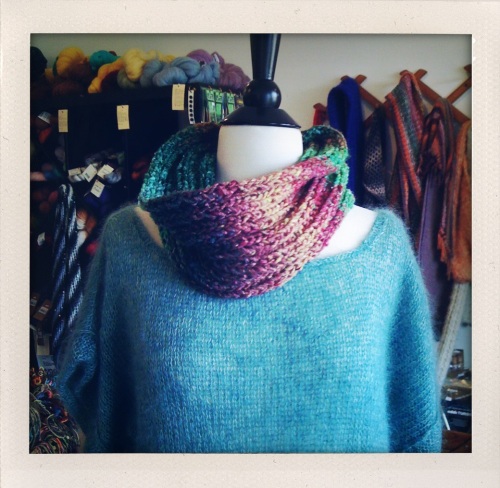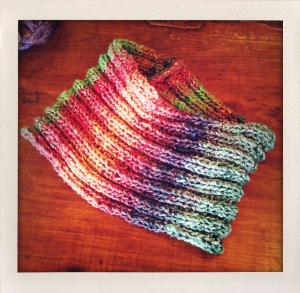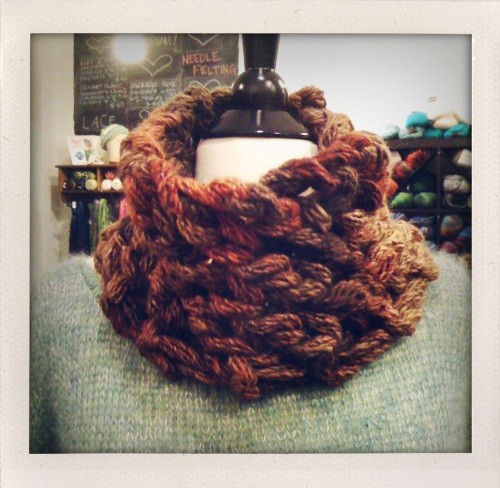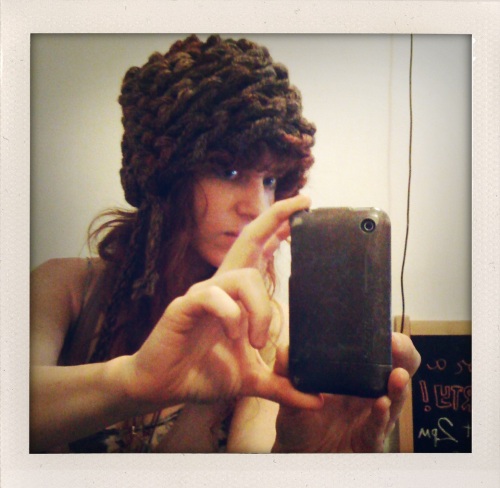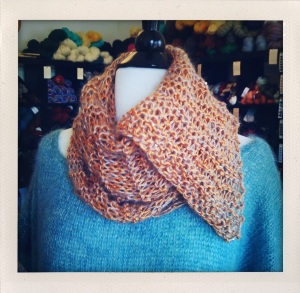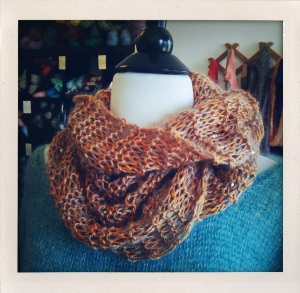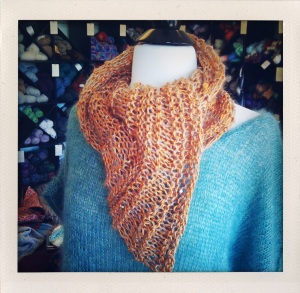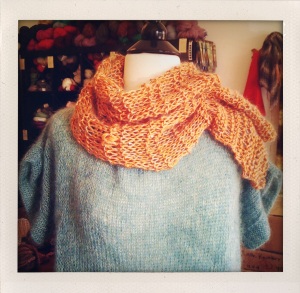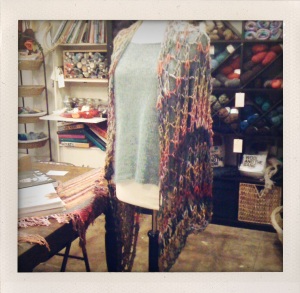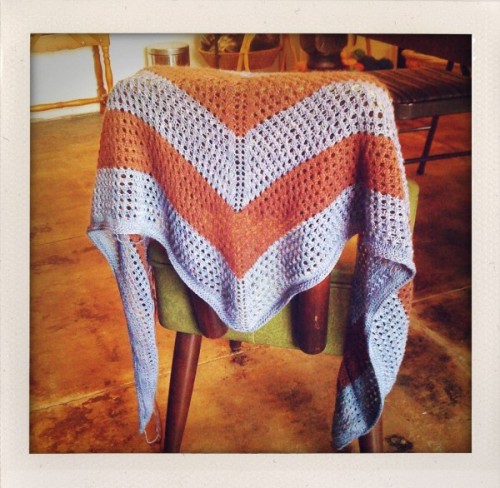
Lavender + Chocolate: two of my favorite things!
This super soft and lightweight chill-blocker is worked from the top-down, using YO increases to create a triangular shape, in a basic eyelet stitch, with a few wide stripes thrown in to highlight the V-shape which results from the increases.
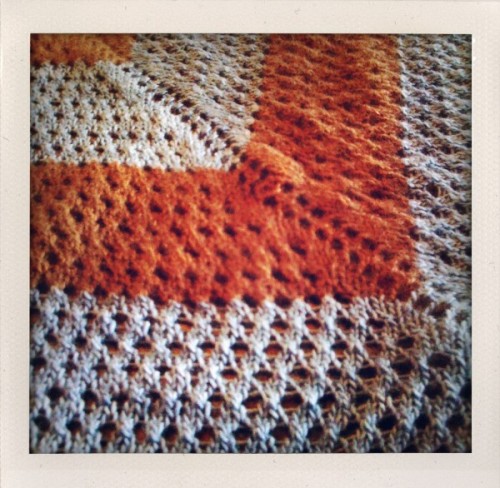
A simple eyelet.
If you’ve been wanting to try out lace, the basic eyelet is a great place to start. This eyelet pattern consists of four rows repeated, and only one of those rows makes the actual lace openings. The other three rows continue the method of YO increases on a stockinette stitch background.
Lavender + Chocolate is also beautiful in a self-striping yarn or a solid color.
—
Lavender + Chocolate by Julie Edwards for The Little Knittery
Materials: 1 ball Schaefer Yarns Andrea (50% silk, 50% wool), 1 ball Jade Sapphire 2-ply Cashmere, or 400 yards each in two different colors (a Main Color and a Contrast Color) and/or fibers of lace, fingering, or sock yarn, US size 4 32″ circular needles, 2 markers, jumbo darning needle
Instructions:
Using MC (Main Color, in this case the purple) cast on 3 sts. Knit 6 rows. You will have a small rectangle. Now, pick up and knit 6 sts from the long edge of the rectangle. You may have to fudge this slightly to get all 6, but persevere. You will now have sort of a weird knitted nub:

This is what it should look like after you’ve picked up and knit 6 sts along one side edge of your knitting.
You now have 9 sts on the needle.
Prep Row: K4, YO, pm, k1, pm, YO, k4. These markers will serve to separate the very center stitch from the rest of the sts.
Row 1 (wrong side): K3, YO, purl to marker, slip marker, k1, slip marker, purl until there are 3 sts left on the needle, YO, K3.
Row 2 (right side): K3, YO, knit to marker, YO, slip marker, K1, slip marker, YO, knit until there are 3 sts left on the needle, YO, K3.
*Notice that you have a YO before 3 knit stitches on either end of the piece, but ONLY on Row 2 (the right side row) do you have YOs on either side of the center stitch.
Repeat Rows 1 and 2 6 more times. You can continue with these two rows if you’d like to keep it simple. The resulting shawl will be in stockinette stitch, still very beautiful, and a lot warmer! But if you’d like a little challenge, you will now switch over to the eyelet lace pattern, which is 4 rows repeated:
Eyelet Row 1 (wrong side): K3, YO, purl to marker, slip marker, k1, slip marker, purl until there are 3 sts remain, YO, K3.
Eyelet Row 2 (lace row): K3, YO, k1, YO, *ssk, YO. Repeat from * until 4 sts before the marker, ssk, K2, YO, slip marker, K1, slip marker, YO, K2, **K2tog, YO. Repeat from ** until 6 sts remain , K2tog, YO, K1, YO, K3.
Eyelet Row 3: As Row 1 (but this time you will be purling the YOs as well as the knit sts. They will feel much looser than regular stitches, but you will treat them the same.)
Eyelet Row 4: Row 2 (right side): K3, YO, knit to marker, YO, slip marker, K1, slip marker, YO, knit until there are 3 sts left on the needle, YO, K3.
Repeat Eyelet Rows 1 through 4 until you have 14 rows of eyelets at the center of the piece (you can just count the holes from up to down), having just finished Eyelet Row 3.
Switch to CC (Contrast Color, in this case the brown). Beginning with Eyelet Row 4, work Eyelet Rows 1 through 4 until you have 12 rows of eyelets at the center of the piece (you can just count the holes from up to down), having just finished Eyelet Row 3.
Now you will switch back to MC, and work as above, switching to CC after 14 center eyelet holes, and so on until you have worked 2 more MC stripes, and 1 more CC stripe. (That’s 3 MC stripes and 2 CC stripes total.)
Now you will work the garter stitch border:
Garter Border Row 1: K3, YO, knit to marker, slip marker, k1, slip marker, knit until there are 3 sts left on the needle, YO, K3.
Garter Border Row 2: K3, YO, knit to marker, YO, slip marker, K1, slip marker, YO, knit until there are 3 sts left on the needle, YO, K3.
Repeat the Garter Border Rows for 6 rows total.
Bind off loosely using the US size 6 needle.





